Understanding Aerial Roots: A Comprehensive Guide
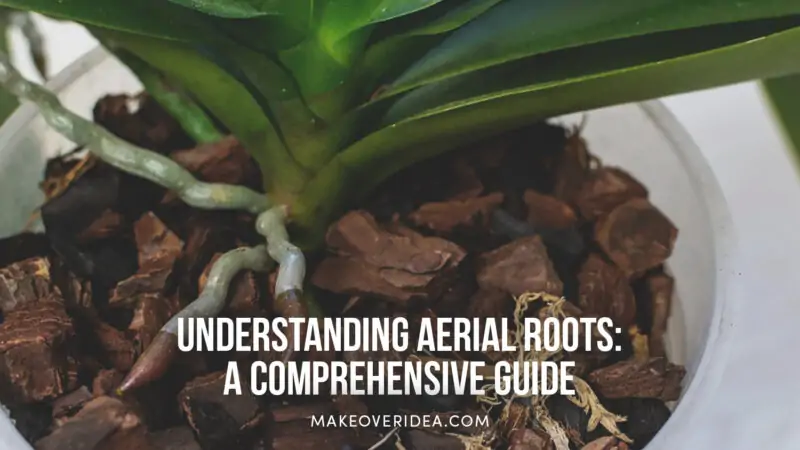
When it comes to houseplants, we often marvel at their lush foliage and vibrant blooms. But have you ever wondered what are aerial roots? These fascinating structures play a significant role in the survival and growth of many plants, including popular houseplants like Monstera, Ivy, and Pothos. In this article, we’ll delve into the world of aerial rhizomes, their purpose, and how they can benefit your indoor greenery.
What are Aerial Roots?
Aerial roots, as the name suggests, are roots that grow above the ground rather than beneath the soil. These roots serve various functions depending on the plant species and environmental conditions. Let’s explore the definition and purpose of aerial rhizomes and learn about some common houseplants that rely on these unique structures.
Definition and Purpose
According to the online dictionary, aerial roots are defined as “rootstocks that develop above the ground and often serve as support structures, getting moisture and nutrients from the air” (source: https://www.dictionary.com/browse/aerial-root ). These roots can help plants mount or anchor onto other structures, such as trees or moss poles.
Dr. Chris Martine, a botanist and professor at Bucknell University, explains that “aerial roots can be an adaptive trait for plants growing in areas where resources are limited, such as poor soils, or where competition for light and space is high.” In such environments, these rhizomes provide an advantage by allowing plants to access vital resources more efficiently.
Common Houseplants with Aerial Roots
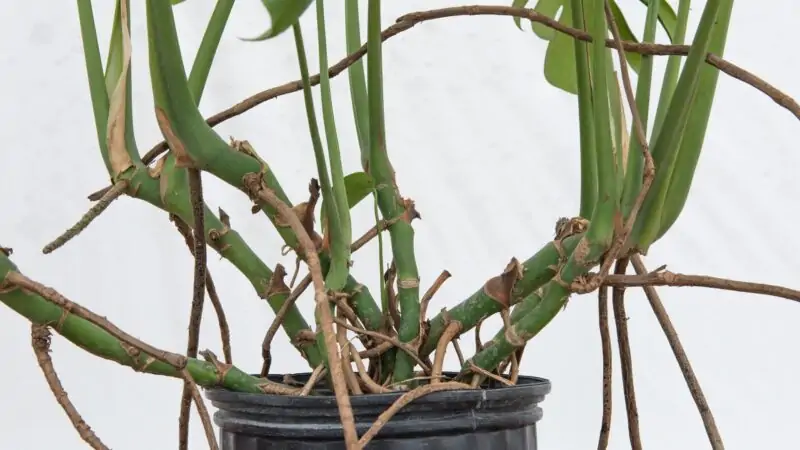
Many popular houseplants boast these individual parts, including:
- Monstera deliciosa: It is famous for its large, fenestrated leaves and aerial roots, which help it move up and attach to nearby surfaces.
- Pothos (Epipremnum aureum): It is a low-maintenance trailing plant with aerial roots that help it cling to surfaces.
- Orchids: Epiphytic orchids like Phalaenopsis and Dendrobium have aerial roots that get all they need from the air.
- Philodendron: It includes many species with aerial rhizomes that have the above-mentioned primary functions.
- Ficus: Some species, like the Banyan tree, develop roots in the air that grow into the soil, eventually becoming woody and supportive.
Types of Aerial Roots
These sprouts can be broadly categorized into three types: climbing, absorbing, and supportive. Each type serves a specific function, enabling plants to thrive in their respective environments.
Climbing
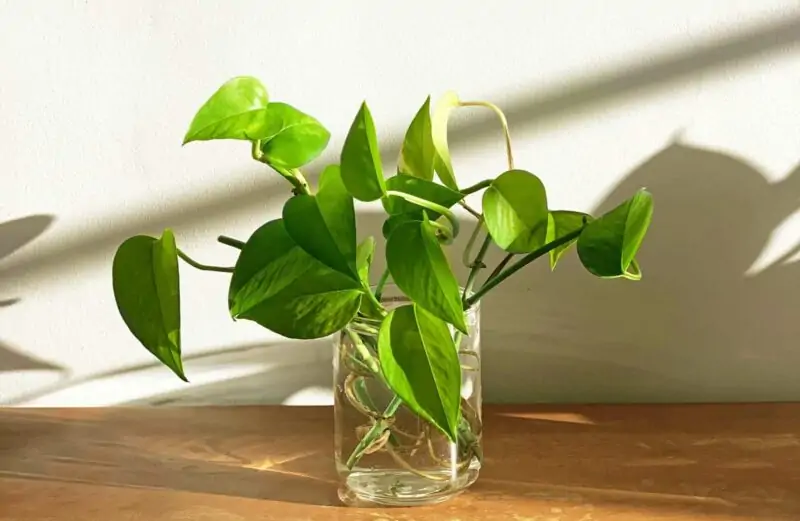
Climbing sprouts are common among tropical, for example, Monstera deliciosa and Golden Pothos. These roots grow from the plant’s nodes and help anchor the plant to nearby surfaces as they move toward the light. This allows them to reach greater heights, access sunlight, and outcompete other plants for resources.
Absorbing
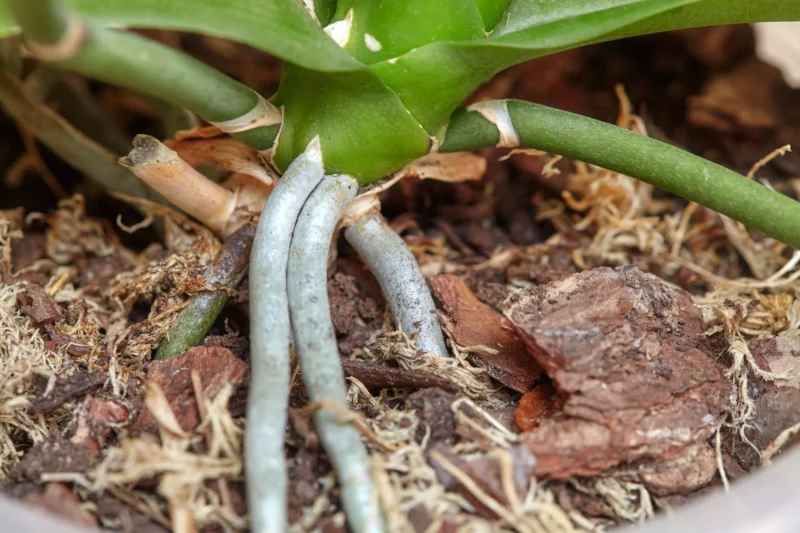
Epiphytic plants like orchids and some species of ferns rely on these roots to obtain water and nutrients in their natural habitat, where they grow on tree branches rather than in soil. In a study by Dr. John Z. Kiss, the dean of the College of Arts and Sciences at the University of North Carolina at Greensboro, it was found that “the aerial roots of epiphytic orchids can absorb water and substances directly from the atmosphere, which is essential for their survival in non-nutritious environments.” These roots often have a spongy texture that aids in the absorption process.
Supportive
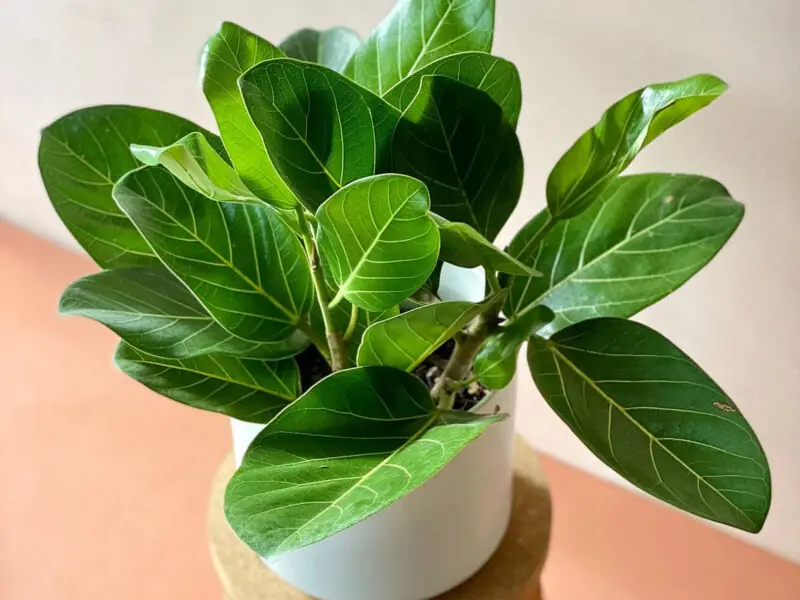
Supportive aerial roots grow from the branches or trunks of certain plants, such as the Banyan tree (Ficus benghalensis) and the Strangler Fig (Ficus aurea). These roots extend from the plant’s upper parts and eventually reach the ground, growing into the soil and thickening over time. As they mature, these roots provide additional structural support for the plant, enabling it to spread out and cover a larger area.
The Role of Aerial Roots in Houseplants
These unique structures not only provide additional support but also aid in nutrient absorption and rising. Let’s take a closer look at how aerial roots help houseplants, using Monstera as a case study, and discuss their significance in each popular type of plant.
There are several benefits because of aerial roots:
- Climbing and support: The sprouts enable the plants to secure themselves onto the surfaces, giving them better access to sunlight. Famous examples of such a structure are Monstera, Scindapsus, and Philodendron.
- Moisture and nutrient absorption: In some plants, such as epiphytic orchids, the structure captures nutritional materials directly from the air, allowing them to thrive in poor environments.
- Improved stability: For plants like the Banyan tree, unique rhizomes that grow into the soil provide additional support, allowing them to spread out and cover a larger area.
Monstera: A Case Study
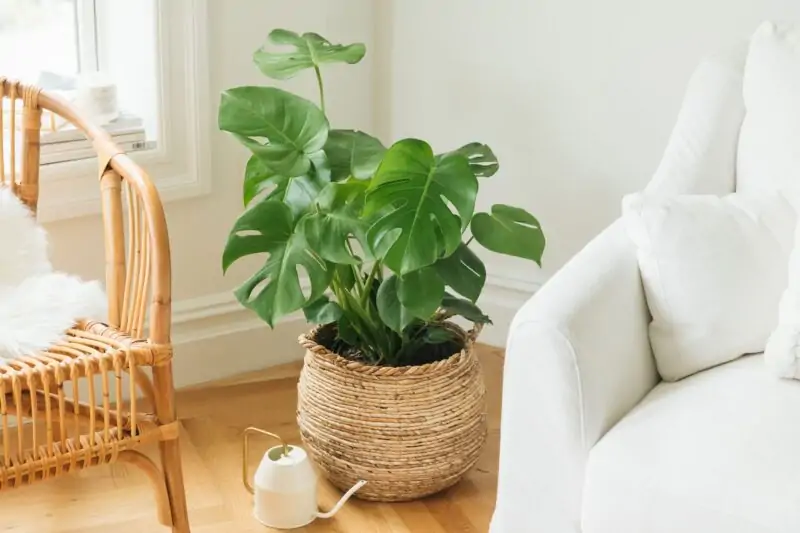
Monstera deliciosa is a prime example of a houseplant that benefits from aerial rhizomes. In its natural habitat, Monstera uses its aerial roots to mount trees and attach itself to the bark, reaching higher levels of the forest canopy where sunlight is more abundant. Unusual structures get everything the plant needs from the air, reducing the plant’s reliance on nutritious soil substances.
In an indoor setting, Monstera’s aerial roots will still seek support, often by attaching to walls, furniture, or moss poles. Providing support structures can help manage the growth of rhizomes while encouraging the plant to grow upwards.
Aerial Roots on Other Houseplants
Several other plants exhibit aerial roots, such as:
- Pothos: Help the plant move up and cling to surfaces, making them excellent trailing or hanging plants.
- Philodendron: Many species of Philodendron use aerial roots to anchor themselves to other props, like trees or moss poles.
- Epiphytic orchids: They are essential for epiphyte plants, allowing them to soak valuable substances up from the air while growing on tree branches.
Aerial Roots and Plant Propagation
Aerial roots can be a valuable asset in this process, as they already have the necessary structures for nutrient soaking up and growth. By understanding how to propagate such houseplants, you can easily multiply your favorite plants and share them with friends and family.
Propagating Houseplants with Aerial Roots
Follow these general steps:
- Identify a healthy section of the plant with aerial roots present.
- Cut below a node using clean, sharp shears (the point where leaves and rootstocks emerge).
- Remove any leaves near the cut end of the cutting.
- Place the cutting in water, ensuring the shoots are submerged, or plant it directly in moist, well-draining soil.
- Keep the cutting in a warm, brightly lit spot, avoiding direct sunlight.
- Monitor the cutting for root development and growth. Once roots have been established, transplant the cutting to its permanent pot if necessary.
Tips and Tricks for Successful Propagation
- Choose healthy, well-developed aerial roots for propagation, as they are more likely to establish and grow successfully.
- Maintain high humidity around the cutting using a humidity dome or plastic bag or placing it in a humid environment.
- Be patient, as some plants may take longer than others to develop new roots and show signs of growth.
- If propagating in water, change the water regularly to prevent bacterial growth and provide new, valuable substances.
- Once the cutting has established roots, gradually acclimate it to its new environment before moving it to its final location.
Frequently Asked Questions
These rootstocks get everything the plant needs from the air through their spongy outer layer, specially adapted for this purpose. These roots are often found in high-humidity environments, where they can readily take water and valuable substances from the air and decompose organic matter on tree branches.
Yes, you can trim the shoots on your beauties if they become too unruly or if you prefer a tidier appearance. However, remember they serve essential functions for the plant, such as supporting the stem and nutritional soaking up. It’s best to trim them sparingly and only when necessary to avoid causing harm to the plant.
They help plants mount by attaching themselves to nearby surfaces, such as tree bark, walls, or moss poles. These roots stabilize the plant as it grows upward, allowing it to reach higher levels where sunlight may be more abundant. Some plants, like Scindapsus and Philodendron, use their rootstocks in the air to cling tightly to surfaces, while others, like Monstera, wrap their roots around objects to support the stem.
Conclusion
In this article, we explored what aerial roots are and their various roles in the lives of houseplants. From climbing support to nutritious absorption and propagation, the structure is crucial to the survival and growth of many indoor plants. By understanding the importance of these unique structures, we can better care for our houseplants and ensure they continue to thrive in our indoor spaces.